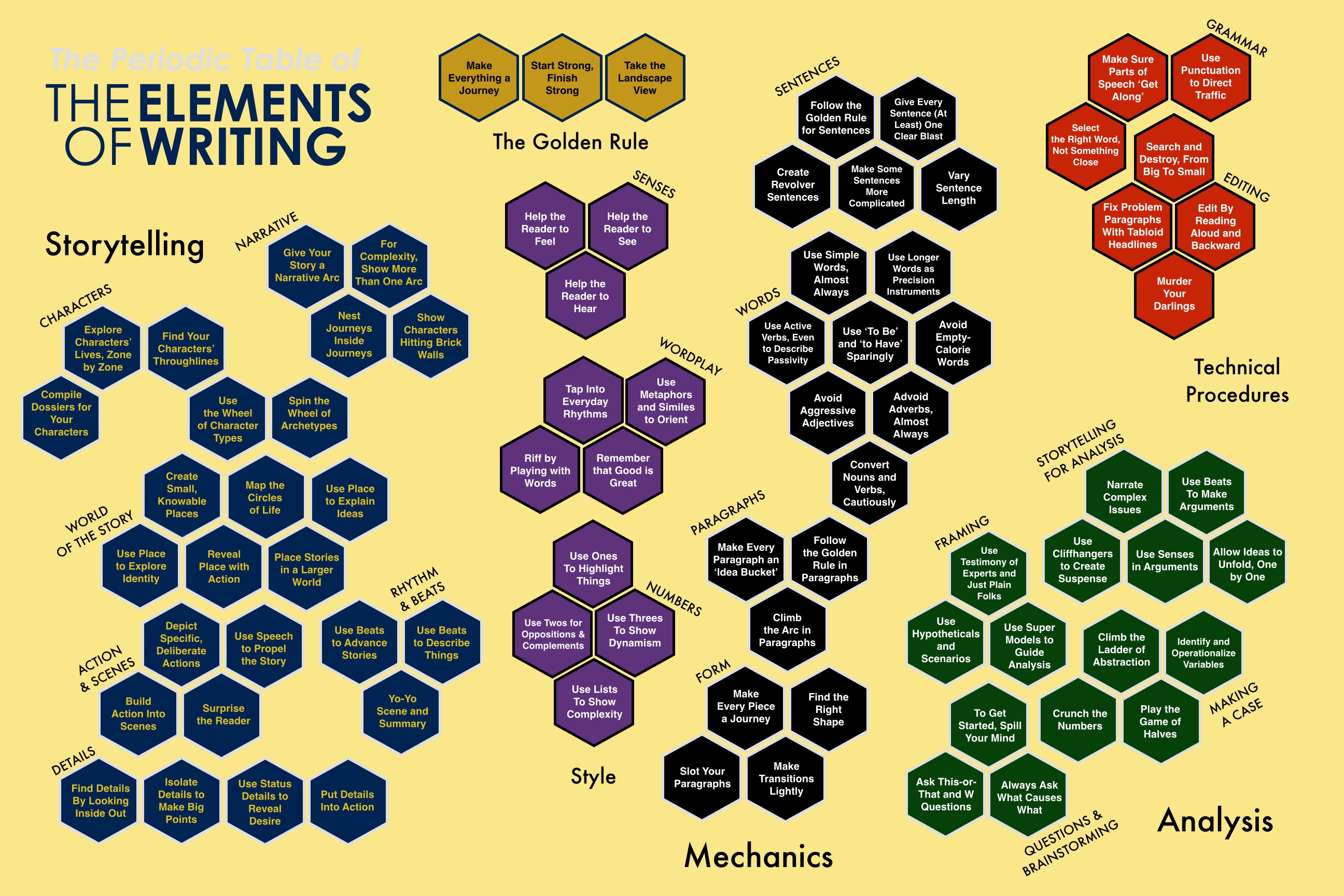Master The Elements.
Transform the Way You Write.
 Whoever you are, whatever you do—whether you have published articles or books, papers or reports, or posted pieces on social media and blogs–you are a writer.
Whoever you are, whatever you do—whether you have published articles or books, papers or reports, or posted pieces on social media and blogs–you are a writer.
We are living in the greatest literary explosion since Gutenberg invented the printing press. Computers, the Internet, blogs and social media, ebooks, and sites like YouTube give us unparalleled opportunities to express our opinions … and find an audience. Never in history have so many people written, by necessity or choice.
Almost all of us could do it better. So we are eager for the tips and tricks that will take our writing to a higher plane.
The Elements of Writing shows the way.
The wrong turn
For most of us, writing instruction takes us down the wrong path—and leads us off the path altogether.
Traditional writing instruction makes one of two mistakes—coddling or scolding.
With coddling, budding writers are told they can do no wrong: Just be yourself, let your passion flow, be your unique self, and all will be well.
With scolding, writing is turned into a grind of abstract rules, red-ink corrections, inflexible formats, and boring academic topics.
Neither approach works. We need the discipline to make the best use of our creativity, which the coddlers don’t understand. And we need the chance to explore ideas without overly harsh and abstract criticism, which the scolders don’t understand.
So we need a new way–which involves both creativity and mastery of technique.

A two-prong approach
The Elements of Writing is based on two simple questions. First, how does the brain work? Second, how do the masters work?

1. How the brain works
The brain wants order and strategy … predictability and surprise … rhythm and periodic departures from that rhythm … shifts, back and forth, from action to repose … suspense and payoff … detail and the bird’s eye view …
The brain doesn’t want confusion and disorder … too much work or too little demand … overload and boring regularity …
The Elements of Writing uses the revolution in brain science to show people how to manage their brain, how to tap their innate abilities and insights. We also show how to “manage” the process of writing, so you don’t get lost or burnt out.

2. How the masters work
That’s why The Elements of Writing “reverse-engineers” writers like Homer and Aristotle, Shakespeare and Cervantes, Poe and Bronte and Twain, Hemingway and Fitzgerald, Woolf and Wolfe, Hitchcock and Morrison, Capote and Lee, King and Baldwin, Coates and Gilbert … and many more.
We use hundreds of case studies that show exactly how the masters perform all the essential tasks of writing—creating characters and scenes and storylines … building clear and dynamic sentences and paragraphs, creating the right sequence of ideas, with style … and analyzing complex, abstract topics.
Simple, intuitive elements
In chemistry, we learn how a small number of basic elements combine to create the infinite complexity of the world.
In The Elements of Writing, we learn how a small number of simple skills and maneuvers create writing that is clear, engaging, energetic.
Every element of writing is simple and intuitive. In fact, you probably know—or have a glimmer of understanding—of most of these skills. You just need someone to make these skills clear, to show how and when to use them.
Want to learn more?


